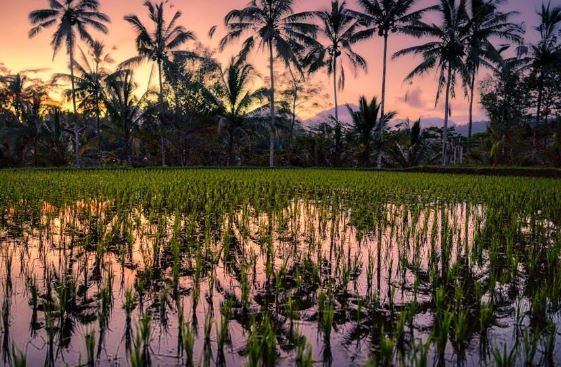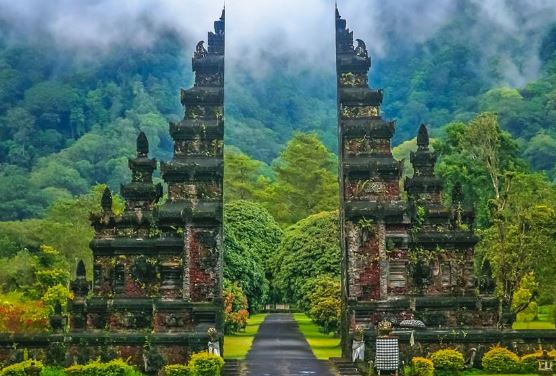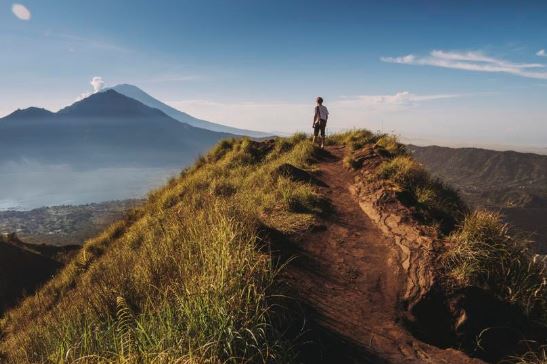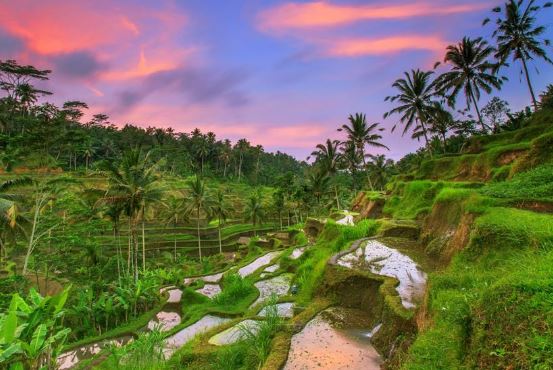
Indonesia, which is made up of thousands of islands in between the Indian and Pacific oceans, is the world’s biggest island country.
And, even though the population swells to over 263 million people, the country is home to an immense wilderness, chock-full of biodiversity.
Situated along the equator, on the Pacific Ring of Fire, this tropical nation experiences more than its fair share of earthquakes and volcanic eruptions.
Nature and culture draw millions of visitors each year and the province of Bali is Indonesia’s top tourist destination.
Read on to discover the top seven reasons to visit Bali.
1. Go for sun, sand, and sea

Visiting the Indonesian archipelago awards travelers with stunning beaches as far as the eye can see and Bali has some of the most gorgeous shorelines in the world. From the calm easy-surfing waters at Seminyak Beach to Padang Padang Beach, highlighted in Julia Roberts’ movie, Eat, Pray, Love, to the black volcanic sands of Keramas Beach to the popular-with-tourists Legian and Kuta beaches, you’ll have no problem finding a warm-water oasis to match your desires and interests.
2. Unearth your bliss

There is no bad time to visit tropical Bali as the weather is consistently warm and humid year-round, with an average daily temperature of around 82 degrees-Fahrenheit. You’ll run into either the wet or dry season, both offering different experiences. Many tourists prefer to visit in the dry season between May and September, when the humidity levels tend to be at their lowest. However, visiting during January and March may afford travelers better deals on hotels and tour packages.
3. Engage your senses: The Island of a thousand temples

You’ll notice Balinese Hindu temples, or Pura, around the larger community areas as well as within family compounds, from the highlands to the coast. While on a bicycle tour around Ubud, in and out of family-filled villages, your guide will likely stop at many temples—big and miniature—to leave offerings of cigarettes, flowers, candy, and incense. Tanah Lot, Ulun Danu, Gunung Lebah, and Goa Lawah are worth visiting while in Bali. Adhere to the traditional dress and bring a sarong, tied at the waist.
4. Learn about the dynamic Balinese art and culture

See a Balinese dance performance where stories are expressed through vibrant full-body movement that utilizes the hands, face, and feet. Listen to live Balinese music. Visit a local festival or celebration like the Balinese New Year, Bali Spirit Festival, Ubud Food Festival, Bali Art Festival, Bali Kite Festival, or the village temple festival called Odalan. Consider purchasing wood sculptures, hand stamped and dyed Batik prints, handmade silver jewelry, weaved goods, or an intricate painting. The Balinese are masters of many crafts.
5. Hike an active volcano with a reputable guide

Mount Batur, or Gunung Batur, located west of Mount Agung, is an active volcano on the island, which experiences eruptions every few years. Active hikers can summit the 5,633-foot peak in just two hours. Hiking early to reach the top at sunrise is a popular activity.
If you decide that hiking to the top is not for you, consider visiting a local village where you can still see Mount Batur. The village of Penelokan in Kintamani offers visitors wonderful sightseeing spots for photography.
6. Get your coffee fix

Indonesia, with its warm-weather mountainous location along the equator, produces and exports a large amount of coffee. Coffee production in Bali occurs in the highland territory of Kintamani, between two active volcanoes, and is mainly grown by small-scale local farmers.
Be cautious of what is touted as “The most expensive coffee in the world”: luwak coffee. Brewed from partially digested coffee cherries that have traveled through the digestive track of the civet, a cat-like animal, this labor-intensive coffee is dense and has a grainy taste. There is no guarantee that the coffee is produced by wild civets and, in fact, many are caged.
All over Bali, on coffee plantations in the highlands and in coffee shops around the beach communities, you can get a quality cup of locally-sourced coffee.
7. See rice terraces

Rice is a staple in Bali and a major part of the Balinese culture. The terraced rice paddies, surrounded by lush vegetation, are a sight to see throughout the countryside, especially at first light. The irrigation system, shared within the communities to support the health of the fields, has been happening for centuries and the ingenuity of it all is quite remarkable. Tegallalang, Jatiluwih, and Belimbing Rice Terraces are popular and worth a look-see. Be prepared to give a donation and wear shoes that can get wet and muddy. Amateur and professional photographers alike will find plenty of green-filled landscapes to capture while visiting.


